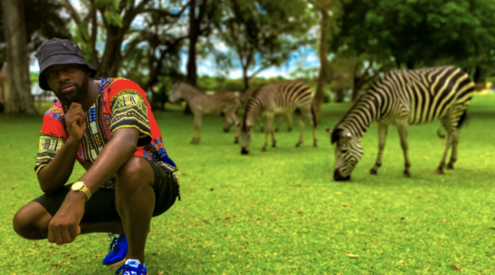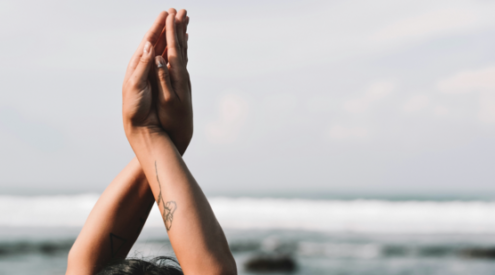The Wiwa consider themselves the guardians of, ‘The Heart of the World.’
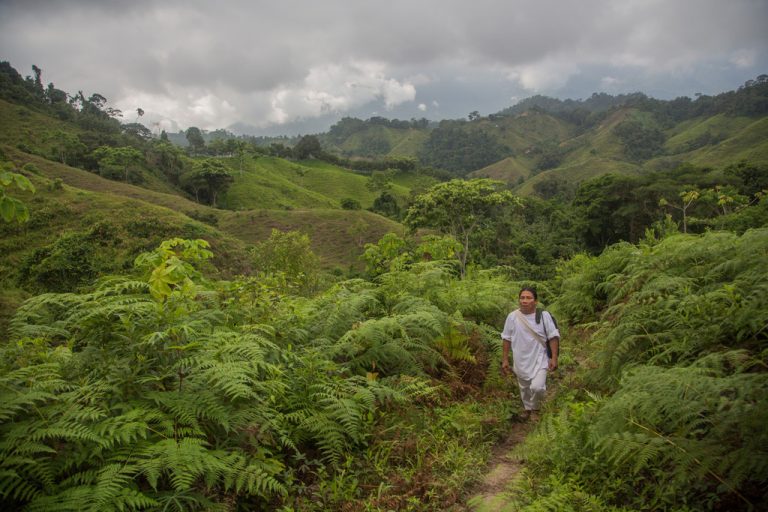
Jose Mujica, the Wiwa guide on our trek, was lighthearted and quick with a joke. The Wiwa wear white as it represents purity and the snow that’s found in the upper reaches of the mountains.
On an elevated ridge in the Sierra Nevada Santa Marta Mountains in Colombia – the highest coastal mountains in the world – there is an ancient, sacred temple. The local tribes call it Teyuna but outsiders know it as Ciudad Perdida, The Lost City.
I recently spent five days hiking to and from the Lost City and while I was there I was able to visit a Wiwa village and discover their fascinating beliefs and way of life.

The semi-nomadic Kogi tribe return to this village for ceremonies and reunions.
The Wiwa are descendants of the Tairona, a tribe who arrived in Colombia in 200 AD and immediately decided they’d found their promised land. When the Spanish arrived around the 15th Century the tribes found sanctuary in the upper slopes of the Sierra Nevada Santa Marta Mountains and have lived in near seclusion ever since.
The Wiwa believe they are charged with the task of holding the health of the planet in balance. And that what we do to nature, we do to ourselves. This connection between nature and humans is at the core of their beliefs and one they wish to communicate with the rest of the world.

The Wiwa lives in harmony with three other nearby tribes; the Kogi, Arhuaco, and Kankuamo. This is a Kogi village.
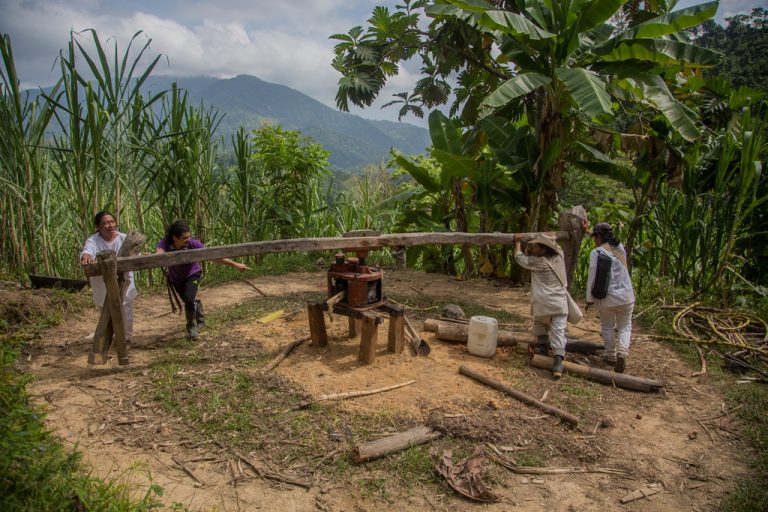
Our guides show us how a sugar cane mill works that’s still in use today.

Wiwa boys and girls are given different accessories. Wiwa girls have necklaces and all Wiwa boys carry bags. Here, a Wiwa woman shows us how they make the bags.
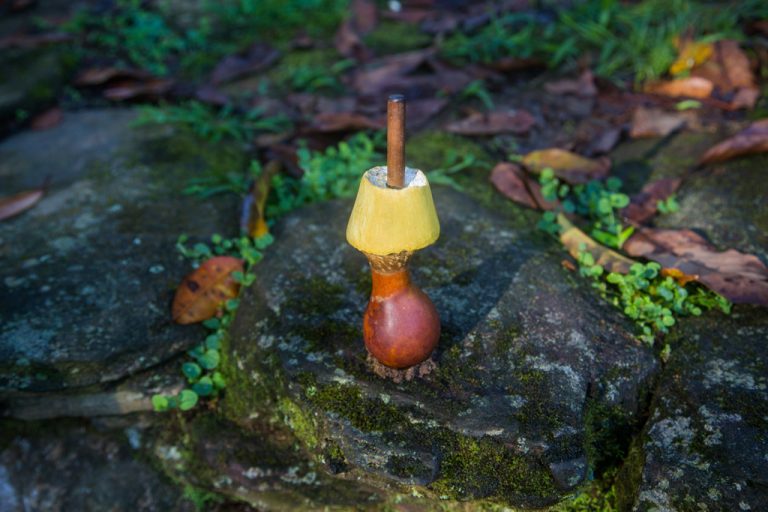
Wiwa men use a danburro as a meditation tool. It’s a dried-out calabash containing crushed seashells. They grind the sea shells up with the stick to make a paste that they put in their mouth, along with coca leaves and tobacco paste. They then methodically rub the stick on the outside of the danburro, which gives it the yellow colour and shape.

The Lost City is a sacred temple for the local tribes. In September every year, no tourists are allowed to visit the site as that time is reserved for religious ceremonies.

The Lost City, or Teyuna, is located on an elevated ridge in the jungle. The Wiwa ancestors believed the higher they built, the closer they’d be to the stars and the sun.

A young mamo – a spiritual guide for the Wiwa – took us through a soul-cleansing ceremony at the end of our hike. ‘What we do to the earth, we do to ourselves.’

A wiwa woman starts the long process of making a bag. It can take months to make the more intricate bags.
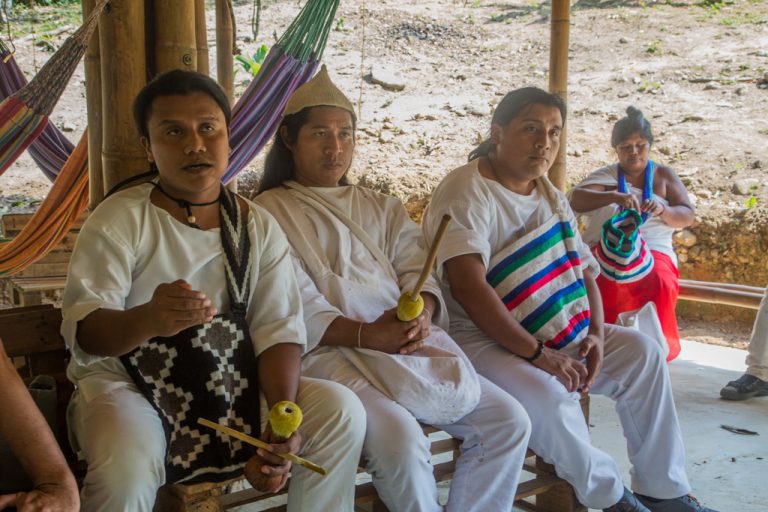
A group of Wiwa leaders discusses their place in society. Many indigenous tribes in Colombia face uncertain futures. The Wiwa have decided to embrace tourism in order to secure their legacy.

Wiwa tribe members can be identified from other tribes by their white hats (pictured right), while a mamo (spiritual guide) wears a slightly different type of hat.

Jose shows how to dry out coca leaves. You take a red-hot stone from a fire, put it in a bag with the leaves, and shake it around rigorously for a couple of minutes.
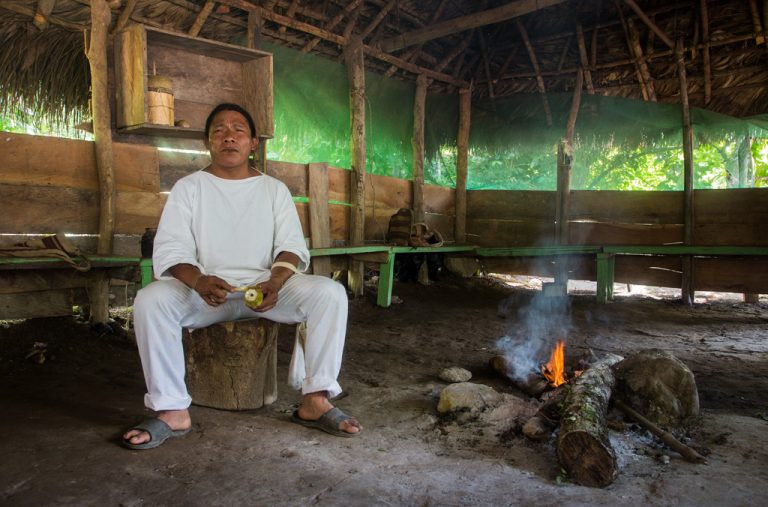 Jose sits using his danburro in a hut.
Jose sits using his danburro in a hut.
Matt was a guest of G Adventures. Their seven-day Colombia-Lost City Trekking tour starts from R9,439 ZAR per person, excluding flights. 6 nights accommodation, 6 breakfasts, 5 lunches and 4 dinners are included along with a G Adventures Chief Experience Officer and Indigenous guide. Visit www.gadventures.com for more information.










